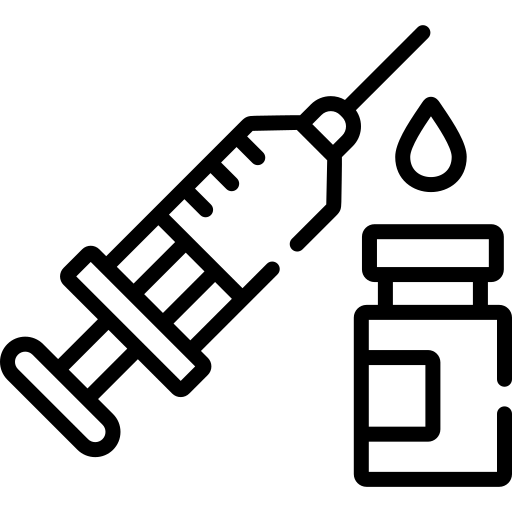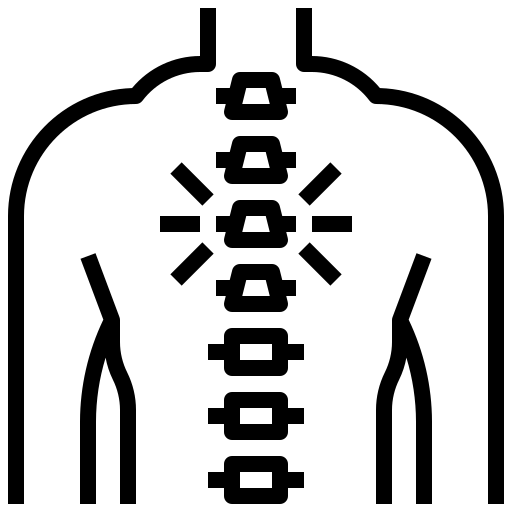Diagnostic & Therapeutic Injections
Injections in Central Georgia
Targeted Pain Relief in Macon, Warner Robins & Dublin
If you’re struggling with chronic back, neck, or joint pain, injections may be the right fit for you. At Axis Spine & Pain, we offer this minimally invasive procedure to help reduce inflammation, relieve nerve pain, and improve your quality of life – without surgery.
With convenient locations in Macon, Warner Robins, and Dublin, we proudly serve patients from Bibb, Houston, Peach, Monroe, Crawford, Jones, Twiggs, Bleckley, and Laurens Counties and the surrounding Central Georgia communities.

What Are Injections?
Injections are a proven interventional pain management treatment to relieve back pain from conditions that cause inflammation and pressure on the nerves or joints in your back or neck. Injections can be used for therapeutic purposes to reduce inflammation or block signals, as well as diagnostic purposes to pinpoint the exact cause of your pain to build a treatment plan that will deliver long-term relief.
During injections, your doctor performs a targeted injection with a powerful anti-inflammatory medication, and sometimes a numbing medication, directly into the source of your pain. This reduces inflammation and irritation or blocks the pain signal to provide relief.

Injections are commonly used to diagnose or treat pain from conditions like:
- General Low Back Pain or Spine Degeneration (Spondylosis)
- Chronic Neck or Mid-Back Pain
- General Low Back Pain or Spine Degeneration (Spondylosis)
- Nerve Pain Radiating from the Spine (Sciatica)
- Narrowing of the Spine (Spinal Stenosis)
- Herniated Discs
- Degenerative Disc Disease
- Failed Back Surgery Syndrome
- Nerve Root Irritation
- Arthritis
- Whiplash or Spinal Injury-Related Pain
- Inflammation of the SI Joint (Sacroiliitis)
Our Treatment Offering
We treat all types of back and spine pain. Below are some common conditions that irritate the back and spine:
Epidural Steroid Injections
Epidural steroid injections are a proven pain management treatment to relieve back pain from conditions that cause inflammation and pressure on the nerves in your back or neck. During this procedure, a doctor performs a targeted procedure to inject a powerful anti-inflammatory medication, and sometimes a numbing medication, directly into the epidural space around the spinal nerves. The anti-inflammatory medication (a steroid or corticosteroid) reduces the swelling and inflammation that cause pressure or irritation on the spinal nerves, giving the spinal cord and nerves more room.
The procedure is performed under fluoroscopy (real-time X-ray imaging) to ensure precise and targeted placement of the medication. The physician will first numb the injection site with a local anesthetic before injecting the anti-inflammatory medication. The procedure takes about 15 minutes and most patients report little to no discomfort.
Minimal recovery time with most patients returning to light activity the same day. Relief may begin within a few days and can last weeks to several months.
Epidural Steroid Injections
Medial Branch Blocks
A medial branch block is a diagnostic injection used to pinpoint the source of your pain to small joints in your back. These joints, located between each vertebra, are connected to nerves called medial branch nerves, which transmit pain signals to the brain.
The procedure is performed under fluoroscopy (real-time X-ray imaging) to ensure precise and targeted placement of the medication. Your doctor injects a small amount of local anesthetic near the medial branch nerves. If your pain significantly decreases after the injection, it confirms the pain source and may indicate that longer-term relief options like radiofrequency ablation (RFA) could be effective. The procedure takes about 15 minutes and most patients report little to no discomfort.
Minimal recovery time with most patients returning to light activity the same day. Pain relief may occur within hours and last up to several days. Because this is a diagnostic injection, the effects are temporary – but it will allow your physician to determine the right next steps for long-term relief.
Medial Branch Block
SI Joint Injections
The Sacroiliac (SI) Joints are located where your spine meets your pelvis. When these joints become inflamed or irritated – due to injury, arthritis, or abnormal movement – it can cause significant lower back and leg pain. SI Joint Injections combine a local anesthetic and a corticosteroid to reduce inflammation in the joint, providing pain relief that may last weeks or months.
Minimal recovery time with most patients returning to light activity the same day. Relief may begin within a few days and can last weeks to several months.
Facet Joint Injections
Facet joints are small stabilizing joints located between each pair of vertebrae in the spine. Over time – or due to injury, arthritis, or degeneration – these joints can become inflamed, leading to pain, stiffness, and reduced mobility. Facet joint injections deliver a combination of a corticosteroid (anti-inflammatory medication) and a local anesthetic directly into the affected joint, helping reduce inflammation and block pain signals.
The procedure is performed under fluoroscopy (real-time X-ray imaging) to ensure precise and targeted placement of the medication. The physician will first numb the injection site with a local anesthetic before injecting the anti-inflammatory medication. The procedure takes about 15 minutes and most patients feel only mild pressure or discomfort.
Minimal recovery time with most patients returning to light activity the same day. Relief may begin within a few days and can last weeks to several months.
Facet Joint Injections
Nerve Blocks
A nerve block is an injection of anesthetic (and sometimes a steroid) around a specific nerve or group of nerves. The goal is to “block” the pain signals from reaching the brain, which provides both diagnostic insight and therapeutic relief. Nerve blocks are often used to pinpoint the exact source of chronic pain, provide temporary or prolonged pain relief, and improve mobility. They can be especially helpful for spine-related conditions, joint pain, or nerve irritation that hasn’t improved with medication or physical therapy.
The procedure is performed under fluoroscopy (real-time X-ray imaging) to ensure precise and targeted placement of the medication. Your provider will numb the skin, guide the needle to the appropriate nerve or nerve root, and then inject the medication. This procedure usually takes 10–15 minutes
Most patients return to normal activity within 24 hours. Some patients feel relief within minutes; for others, it may take a few days
Nerve Blocks
Trigger Point Injections
Trigger point injections are a widely used pain management treatment designed to relieve muscle pain caused by knots or tight bands of muscle fibers known as trigger points. These trigger points can form in muscles due to overuse, injury, tension, or stress and can cause pain in other areas of the body. During the procedure, a physician injects a small amount of anesthetic directly into the trigger point to reduce inflammation, relax the muscle, and relieve pain.
The physician will first locate the trigger point by palpating the muscle. A small needle is then used to inject the medication directly into the knot. The procedure usually takes less than 10 minutes, and patients may feel a brief twitch or cramp as the needle releases tension in the muscle. Most patients report minimal discomfort during the injection.
Most patients are able to resume normal activity the same day. Mild soreness at the injection site may occur but usually resolves quickly. Pain relief may be felt immediately or develop gradually over the next few days, with results lasting from several days to a few months, depending on the underlying cause of muscle tightness.
Trigger Point Injections
Joint Injections
Joint injections are a targeted treatment used to relieve pain and inflammation in joints affected by arthritis, injury, or degeneration. These injections typically involve corticosteroids or hyaluronic acid (HA). Corticosteroid injections reduce inflammation, while hyaluronic acid injections help lubricate and cushion the joint, improving mobility and reducing pain. HA injections are commonly recommended for osteoarthritis in areas such as the knees or elbow.
The physician will clean and numb the skin over the joint, then insert a needle into the joint space using ultrasound guidance if needed for precision. Once in position, the appropriate medication is injected. The entire process typically takes about 10–15 minutes and causes little discomfort.
Most patients resume normal activities within 24 hours. Some may experience temporary soreness at the injection site. Pain relief from corticosteroid injections often begins within a few days and can last weeks to months. HA injections may take longer to take effect but can provide longer-lasting relief, sometimes up to six months.
Joint Injections
Benefits of Injections

Stay on your feet – non-surgical and minimally invasive

Targets inflammation at the source

Reduces pain in the back, neck, arms, or legs

May result in quick, lasting relief

Improves mobility and daily function

May delay or prevent the need for surgery
Real Stories.
Real Relief.
Real Relief.
Hear from Patients Who Chose Axis Spine & Pain
500+ 5 Star Reviews
Rated 4.9 by Our Patients

Is an Injection
Right for You?
Right for You?
Injections are often recommended for patients who haven’t found relief through conservative treatments like medication or physical therapy. During your consultation at Axis Spine & Pain, our board-certified pain management specialists will determine if this treatment is appropriate for your condition and goals.
Fill out the form and a care coordinator will contact
you to schedule your consultation.
Contact Us
Trust Axis Spine & Pain for Expert Care
At Axis Spine & Pain, our experienced team specializes in treating spine and nerve-related pain using the latest minimally invasive techniques. We’re committed to delivering compassionate, high-quality care close to home in Macon, Warner Robins, and Dublin, GA.











